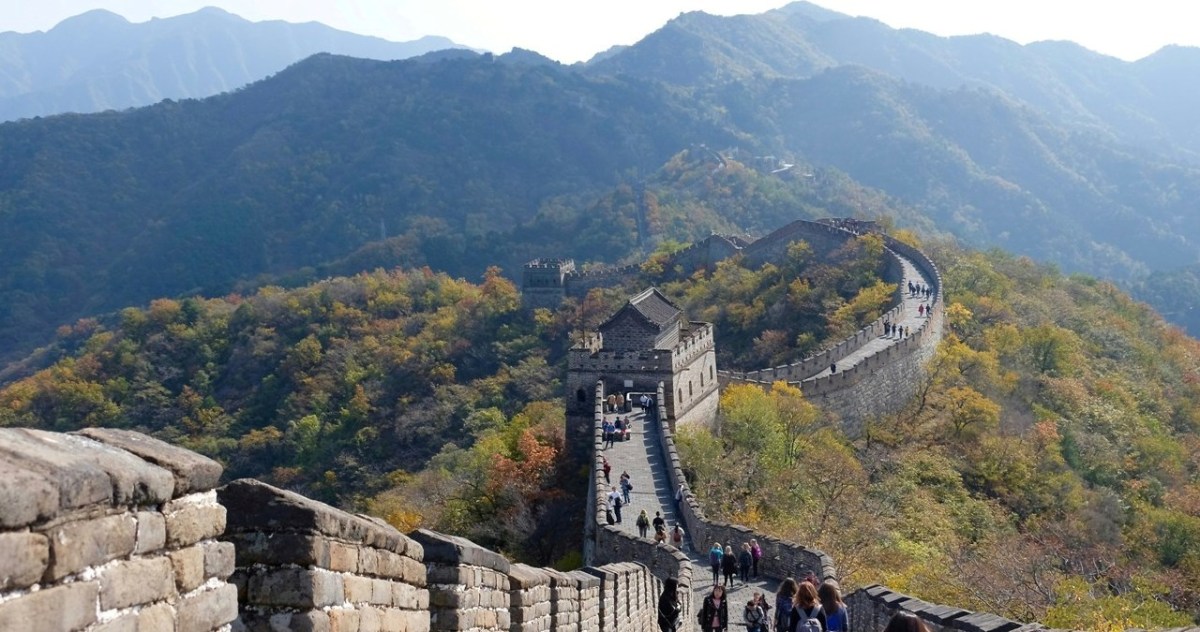The Great Wall of China is a series of fortifications made of stone, brick, tamped earth, wood, and other materials, generally built along an east-to-west line across the historical northern borders of China. It was constructed to protect Chinese states and empires against the invasions and raids of nomadic groups from the Eurasian Steppe. Several walls were being built as early as the 7th century BC; these were later joined together and made bigger and stronger, and now collectively they are referred to as the Great Wall. Whether you plan to take a tour or hike the site , have a look at our quick guide below before you travel to Asia.
Things to know before you visit or hike the Great Wall of China
- Construction Periods: Major construction took place during the Qin Dynasty (221–206 BC), Han Dynasty (206 BC–220 AD), and the Ming Dynasty (1368–1644).
- Length: The entire wall with all its branches stretches over 13,000 miles (21,000 kilometers).
- Purpose: Its primary purpose was to protect against invasions and raids, but it also served for border control, allowing the imposition of duties on goods transported along the Silk Road, regulation of trade, and control of immigration and emigration.
Private Great Wall Hiking Tour: Across The Border of 3 China Provinces
Architectural Features:
- Walls: Built using materials local to the region of construction—compacted earth, wood, bricks, and stone.
- Watchtowers and Fortresses: Used as lookout points and fortifications.
- Beacon Towers: Signal towers that were used to send smoke signals or fire signals.
- Gates: Various gates provided controlled access for trade and military movements.
Visiting the Great Wall of China
Popular Sections for Tourists:
- Badaling: The most famous and well-preserved section, easily accessible from Beijing, often crowded with tourists.
- Mutianyu: Known for its stunning scenery and fewer crowds compared to Badaling. It has a cable car and a toboggan ride.
- Jinshanling: Offers a combination of restored and wild wall sections, great for hiking and photography.
- Simatai: Less restored and more rugged, offering a challenging hike with fewer tourists.
- Jiankou: Known for its wild and dramatic ruins, popular with adventurous hikers and photographers.
Tips for Visiting the Great Wall
- Best Time to Visit: Spring (March to May) and autumn (September to November) offer the best weather and scenery.
- Preparation: Wear comfortable walking shoes, bring water, snacks, sun protection, and be prepared for steep climbs.
- Transportation:
- From Beijing, you can take a bus, train, or join a guided tour.
- For more remote sections like Jinshanling or Simatai, you might need to hire a private car or join a specialized tour.
- For sections like Badaling and Mutianyu, there are direct buses and organized tours available.
- Accommodation: Consider staying overnight in nearby towns for an early start and fewer crowds.
Cultural Etiquette:
- Respect the historical site by not climbing on forbidden parts, not littering, and following local guidelines.
- Engaging with local vendors and guides can enhance your experience and support the local economy.
Additional Activities:
- Hiking different sections to experience both restored and wild parts of the wall.
- Visiting nearby historical sites and museums to learn more about the history and culture of the region.
- Enjoying local cuisine in nearby villages and towns.
By planning your visit carefully and choosing the section that best fits your interests and physical condition, you can have a memorable and enriching experience exploring one of the most iconic landmarks in the world.
Can you use a Travel SIM Card in China?
Yes, you can use a travel SIM card in Asia, but there are a few considerations to keep in mind. Many international travel SIM cards work in China, providing data, voice, and text services, but it’s crucial to ensure that the one you choose is compatible with Chinese networks (like China Mobile, China Unicom, or China Telecom). Additionally, China has strict internet censorship, commonly referred to as the Great Firewall, which blocks access to many foreign websites and services, including Google, Facebook, and WhatsApp. To bypass this, you may need to use a VPN, but be aware that not all VPNs are effective or legal in China. For the best experience, consider purchasing a local SIM card upon arrival, which can be more cost-effective and provide better service.



One thought on “The Great Wall of China: info and travel tips to prepare for your trip”
Comments are closed.